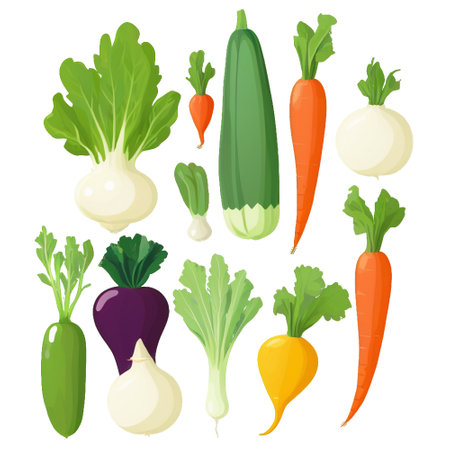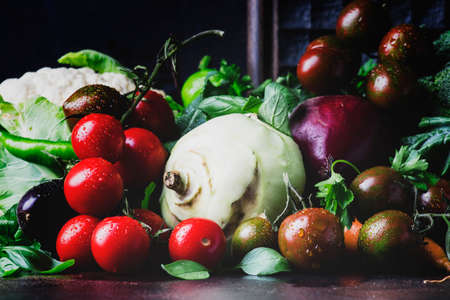The Importance of Reducing Food Waste
In American households, food waste is more than just an inconvenience—it’s a pressing environmental and social challenge. Each year, millions of tons of edible food end up in landfills across the United States, where they decompose and emit methane, a potent greenhouse gas. Reducing food waste not only lessens landfill pressure but also conserves precious resources like water, energy, and labor invested in growing, transporting, and preparing our meals. Embracing composting at home transforms kitchen scraps from waste into a valuable resource, nourishing the soil rather than harming the planet. This simple act connects us to the natural cycle, enhancing sustainability while cultivating healthier gardens and landscapes right in our own backyards.
2. Getting Started: Composting Basics
Turning kitchen scraps into nutrient-rich fertilizer begins with understanding the essentials of composting. Whether you have a sprawling backyard or a cozy patio, setting up your home compost system is easier than you might think—and it all starts with choosing the right bin and location.
Choosing the Right Compost Bin
There are several types of compost bins suited for American homes, each offering unique benefits depending on your available space and lifestyle. Here’s a quick guide to help you decide:
| Bin Type | Best For | Pros | Cons |
|---|---|---|---|
| Tumbler Bin | Urban patios, small yards | Easy to turn, keeps pests out, compact | Limited capacity |
| Stationary Bin | Larger backyards | Higher volume, affordable, simple design | Manual turning required, may attract critters if not managed well |
| Worm Bin (Vermicomposting) | Indoor use, apartments, balconies | No odor when managed properly, fast breakdown, educational for kids | Sensitive to temperature changes, requires worm care |
Selecting the Best Location
Your compost bin’s placement can make or break your success. In most American climates, look for a spot that’s convenient yet discreet—near enough to your kitchen for easy access but far enough from doors and windows to avoid any unwanted smells or pests.
- Sunlight: Partial shade is ideal; too much sun can dry out your pile while too little slows decomposition.
- Drainage: Place your bin on bare soil or grass to encourage good drainage and allow beneficial organisms to enter.
- Accessibility: Make sure there’s enough room around your bin for turning and collecting finished compost.
Pro Tip: Blend Aesthetics with Functionality
If you care about curb appeal, consider screening your compost bin with native shrubs or lattice panels. This creates a harmonious look while keeping your sustainable efforts subtly integrated into your garden landscape.

3. What to Compost: Kitchen Scraps and More
Knowing what goes into your compost bin is the first step toward turning kitchen waste into garden gold. In American homes, the right blend of “greens” and “browns” creates a thriving compost pile that mimics the natural cycles of healthy landscapes.
Kitchen Scraps to Include
Most fruit and vegetable peels, coffee grounds, tea bags (without synthetic materials), eggshells, and leftover bread are all excellent sources of nitrogen-rich “greens.” These scraps break down quickly and infuse your compost with essential nutrients. Avoid putting meat, dairy, oils, or processed foods in your compost—they attract pests and slow decomposition.
Household Items That Help
Don’t stop at the kitchen! Shredded newspaper, cardboard (without glossy coatings), paper towels, and even hair from hairbrushes can be added as “browns”—carbon-rich materials that balance out your greens. Leaves, straw, and small twigs also work well. In the spirit of American resourcefulness, repurpose these everyday items rather than sending them to the landfill.
Balancing Greens and Browns
The key to healthy compost is maintaining an ideal ratio—think two parts browns to one part greens. If your pile smells sour or becomes slimy, add more browns; if it’s dry and decomposing slowly, toss in extra greens. Mix materials regularly to allow air flow and speed up the transformation from waste to rich fertilizer.
Pro Tip for Home Gardeners
Keep a small countertop bin for daily scraps and an outdoor pile or tumbler for easy transfer. This makes it simple to stay on track while contributing to a beautiful, sustainable yard—the true spirit of American gardening.
4. How to Maintain Your Compost Pile
Once youve started your compost pile, nurturing it into rich, garden-ready fertilizer is all about regular care and attention. Whether you live in a humid Southern suburb, an arid Southwestern backyard, or a breezy Pacific Northwest garden, maintaining your compost ensures it transforms kitchen scraps into black gold for your landscape.
Turning Your Compost: The American Way
To keep your compost pile thriving, turning is essential. Use a sturdy pitchfork or compost aerator every 1-2 weeks to mix up the materials and provide oxygen—this speeds up decomposition and prevents odors. In cooler climates like New England or the Midwest, turn less frequently during winter but resume a regular schedule as temperatures rise.
Watering: Striking the Right Balance
Moisture is key for healthy compost. Aim for a texture similar to a wrung-out sponge. Overly dry piles (common in Western states) need more frequent watering, while rainy regions (like the Southeast) may require covering your pile to prevent sogginess. Here’s a quick guide:
| Region | Typical Weather | Watering Tips |
|---|---|---|
| Northeast & Midwest | Variable, cold winters | Add water during dry spells; insulate pile in winter with leaves or straw |
| Southeast | Humid & wet | Cover pile during heavy rains; turn more often to avoid soggy conditions |
| Southwest & West Coast | Dry & hot summers | Water more frequently; cover pile with tarp to retain moisture |
Troubleshooting Common Issues
No matter where you live, you might run into some classic compost challenges. Heres how to address them:
- Bad Odors: Usually means too many wet greens or not enough air. Add dry browns like leaves or cardboard and turn the pile.
- Pile Not Heating Up: Add more nitrogen-rich materials (fruit peels, coffee grounds), and check that the moisture level is right.
- Pests: Avoid adding meat or dairy scraps and always bury fresh food under existing compost layers.
Your Compost Routine: A Simple Checklist
- Turn the pile every 1-2 weeks for optimal airflow.
- Check moisture weekly; adjust as needed for your region.
- Add new kitchen scraps beneath older material.
- Troubleshoot issues quickly to keep things on track.
Embracing Composting as a Lifestyle Choice
Caring for your compost pile isn’t just practical—it’s a mindful practice that brings you closer to nature’s rhythms. With regular attention tailored to America’s diverse climates, your kitchen scraps will soon be nourishing both your soil and your sense of stewardship toward the land.
5. Harvesting and Using Your Finished Compost
Step 1: Recognizing Mature Compost
Before reaping the rewards of your composting efforts, its crucial to ensure your compost is fully matured. Finished compost will have a rich, dark color, crumbly texture, and an earthy aroma reminiscent of forest soil. All original kitchen scraps and garden clippings should be unrecognizable. If you spot chunks of eggshells or bits of produce, let your pile decompose longer for best results.
Step 2: Harvesting the Compost
To harvest, simply remove the top layer of unfinished material and set it aside for further breakdown. Scoop out the dark, finished compost from the bottom or center of your bin using a garden fork or shovel. Sift it through a wire mesh if you want extra-fine compost—this works especially well for potted plants or seed starting mixes.
Step 3: Using Compost in Your Backyard Garden
For In-Ground Gardens
Spread a two- to three-inch layer of compost across your vegetable beds or flower borders each spring and fall. Gently work it into the top few inches of soil with a hand rake. This enriches your soil with nutrients and organic matter, promoting strong root systems and vibrant blooms.
For Raised Beds
Add one to two inches of finished compost to your raised beds at the start of each growing season. Mix it thoroughly into existing soil to boost fertility and improve drainage—key for thriving veggies and herbs in American backyard landscapes.
For Potted Plants & Container Gardens
Blend mature compost into potting mix at a ratio of about one part compost to three parts soil. You can also use it as a top dressing; simply sprinkle a thin layer on the surface and water it in. This approach steadily feeds your container plants while supporting lush foliage and colorful flowers.
A Touch of Local Wisdom
Composting is more than recycling—it’s transforming waste into something beautiful that nurtures your landscape year after year. By closing the loop right at home, you’re embracing an eco-friendly tradition cherished across American gardens, from suburban backyards to city balconies.
6. Composting Tips for Every Space
Creative Solutions for Apartments
Living in an apartment doesnt mean you have to miss out on composting. Compact, odor-controlled countertop compost bins make it easy to collect kitchen scraps. Consider a worm bin (vermicomposting) that fits under the sink or on your balcony—red wigglers transform food waste into rich castings without unpleasant smells. Many U.S. cities offer community drop-off points or subscription-based pick-up services for food scraps, so explore local programs for an effortless composting experience.
Suburban Home Strategies
If you have a backyard, you have options! Classic compost bins and tumblers are popular in suburban neighborhoods. Choose a spot with partial shade and good drainage; layer green materials (fruit peels, coffee grounds) with browns (fallen leaves, cardboard). To blend seamlessly with your landscape design, try wooden pallet bins or decorative wire enclosures—these can be as functional as they are beautiful. Don’t forget to check with your local municipality for free compost workshops or discounted bin programs.
Urban Garden Innovations
Even city dwellers with limited outdoor space can contribute to a greener planet. Balcony rail planters or vertical garden towers often include built-in compost modules—perfect for transforming kitchen scraps into fertilizer right where your veggies grow. Community gardens frequently welcome member contributions of food waste to their communal piles; it’s a great way to connect with neighbors while giving back to the earth. For those short on time, Bokashi buckets use effective microorganisms to ferment scraps indoors, producing pre-compost that finishes breaking down when added to soil or outdoor bins.
Locally Available Tools & Resources
No matter your living situation, leveraging local resources can simplify your compost journey. Hardware stores and farmers markets across the U.S. carry compact bins, aerators, and natural compost starters. Many neighborhoods have Facebook groups or apps like Nextdoor where residents swap tips or surplus compost supplies. By weaving together local knowledge and resources, you not only reduce waste but also cultivate a vibrant home landscape—no matter how big or small your space may be.


